As science journalists, we are fortunate at Physics World that the stories we cover are often highly visual. Physics and astronomy are full of eye-catching imagery – the scientific results, the technologies and the diverse range of people involved in the scientific endeavour. The images in this collection tell some of the key stories from the world of physics in 2016.
New boss at CERN
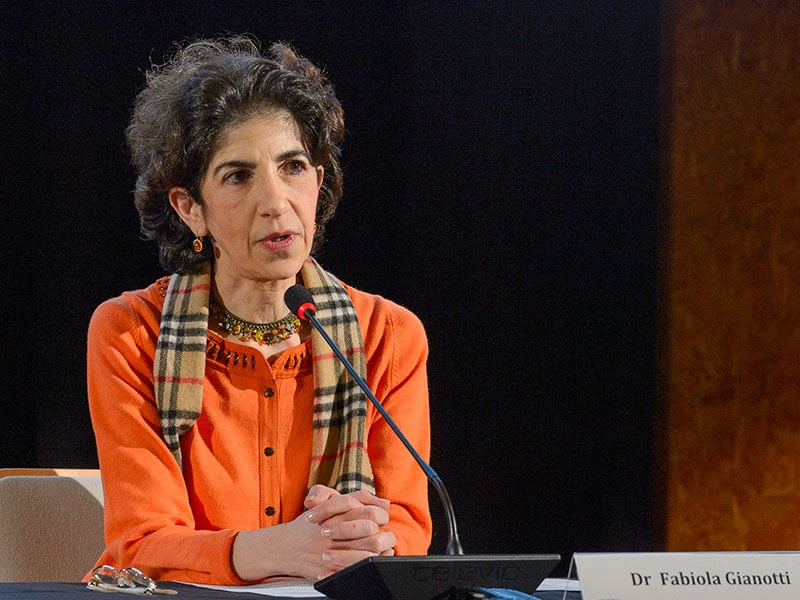
January began with a changing of the guard at the CERN particle-physics lab near Geneva. Italian physicist and former ATLAS spokesperson Fabiola Gianotti became the15th director-general of the lab since it was founded in 1953. On 1 January she succeeded Rolf-Dieter Heuer, who has stepped down after seven years in charge to take up a place on a new seven-member panel that will provide scientific advice to the European Commission. “My priority as CERN director-general will be to expand and maintain CERN’s excellence in four areas: science; technology and innovation; education; and peaceful collaboration,” Gianotti said. For CERN’s flagship experiment, the Large Hadron Collider (LHC) it has been a fairly quiet year in terms of breakthrough science, especially once the “bump” at 750 GeV in data collected by the ATLAS and CMS detectors was confirmed in August to be a mere statistical fluctuation. On the bright side, the LHC itself has performed very well, with the ATLAS and CMS detectors recording 60% more collisions than expected during its proton run from April to the end of October – more than a quadrillion (6.5 × 1015) collisions, at an energy of 13 TeV.
A historic ripple
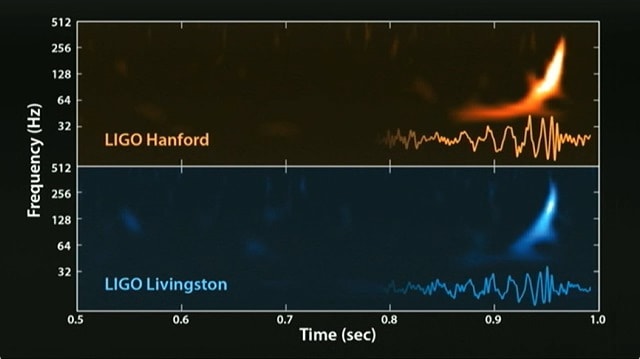
The physics story of the year was the LIGO collaboration’s announcement on 11 February that it had made the first ever direct detection of gravitational waves. The waves were produced from the collision of two black holes of 36 and 29 solar masses, respectively, which merged to form a spinning, 62-solar-mass black hole, some 1.3 billion light-years away in an event dubbed GW150914. The signal or “chirp” as it became known was detected on 14 September 2015 and was measured by the newly upgraded aLIGO detectors – one in Hanford, Washington, and the other in Livingston, Louisiana. The discovery ends a decades-long hunt for these ripples in space–time, and marks the beginning of the era of gravitational-wave astronomy. It also provides evidence for one of the last unverified predictions of Einstein’s general theory of relativity. Not content with grabbing the headlines once, the LIGO collaboration announced in June that it had confirmed a second set of gravitational waves, which had passed through LIGO’s detectors on 26 December 2015. For all of these reasons and more, the LIGO collaboration was the clear winner of the 2016 Physics World breakthrough of the year.
Political earthquakes

Out there in the world of politics, it is fair to say that developments in 2016 have divided opinion in highly divisive ways. The first political earthquake to strike the Western world occurred on 23 June when the British public voted narrowly in favour of leaving the European Union (EU) in a referendum. 51.89% of voters opted for leave, while 48.11% plumped for remain. The vote was preceded by vitriolic campaigns, with politicians on both sides of the debate being roundly criticized for scaremongering and providing misinformation in some cases. UK science has traditionally done well out of EU funding. The UK’s Office for National Statistics estimates that the UK contributed €5.4bn between 2007 and 2013 to research spending in the EU and received back €8.8bn.
The impending Brexit has also cast doubt over the futures of EU citizens working in physics departments across the UK, and over Britons working in Europe. Moreover, question marks remain over the role British scientists will play in European projects once the nation has left the EU. Scientists have been among those frustrated with the lack of information from the British government regarding its Brexit plans (assuming of course they have some plans).On 2 July scientists were among the thousands of people to join the “March for Europe” rally in London, which called for transparency among political leaders to outline their vision for the future of Britain in Europe.

Of course, the second political earthquake to strike the West was the unexpected victory of Donald Trump in the US election. Trump’s inauguration is scheduled to take place on 20 January, but many scientists – particularly in the climate science community – are already fearful of what Trump’s presidency might bring. Trump of course previously described the concept of global warming as a hoax “created by and for the Chinese in order to make U.S. manufacturing non-competitive”. Before even taking office, Trump has selected Scott Pruitt – an outspoken sceptic of climate change – as the next administrator of the Environmental Protection Agency. Meanwhile, Rex Tillerson the chief executive of oil and gas giant ExxonMobil will be Trump’s secretary of state while oil drilling proponent Rick Perry will head the Department of Energy. A senior Trump campaign advisor has also indicated that NASA will no longer take on climate projects under a Trump administration.
As with the Brexit campaigns, migration issues played a key role during the US presidential campaign. Trump famously promised to build a wall along the Mexico–US border (to be paid for by Mexico) and to ban Muslims from entering the US. It is too early to say whether the historic outcomes of these two votes will lead to brain drains from the UK and US but that is the fear of some. As 2016 draws to a close, uncertainty is the name of the game.
FAST developments

Uncertainty is not a word in the official dictionary of the Chinese Communist Party especially when it comes to large-scale construction projects. One of the nation’s latest milestones is to boast the world’s biggest single-aperture radio telescope – the Five-hundred-meter Aperture Spherical Telescope or “FAST” as it is better known. FAST comprises 4450 reflecting panels, which provide it with a collecting area of 30 football pitches – more than twice as big as the 305 m diameter radio telescope at Arecibo Observatory in Puerto Rico. Located deep in the hills in the south-western province of Guizho, the ¥1.5bn ($180m) telescope saw its first light in September and will cover a frequency range of 70 MHz to 3 GHz. Dark matter investigation and the detection of distant astronomical objects are among the key research areas. In October it was also announced that FAST would be joining the Breakthrough Listen programme, founded by Russian physicist-turned-entrepreneur Yuri Milner. Launched in July 2015, the programme claims to be the most comprehensive, intensive and sensitive search ever undertaken for artificial radio and optical signals.
A rocky neighbour
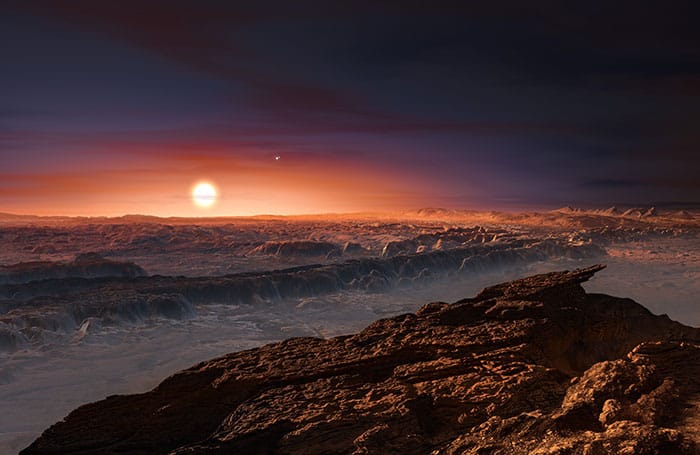
While Milner and company probe the far reaches of the universe for an alien broadcast, the presence of extra-terrestrial life may be closer to home than we could have imagined. In August the international Pale Red Dot collaboration announced that it had clear evidence of at least one planet orbiting Proxima Centauri, the closest star to the Sun. The exoplanet – dubbed Proxima b – has a minimum mass of about 1.3 times that of the Earth and is therefore most likely a terrestrial planet with a rocky surface, and has a short orbit of around 11.2 days. Our newly found neighbour also lies within its star’s habitable zone, meaning that it could, in theory, sustain liquid water on its surface, and may even have an atmosphere.
What will ultimately determine the habitability of the planet – including whether it currently has liquid water on its surface and an atmosphere – depends entirely upon its formation history. According to the researchers, an answer to this question could be sought using a 3.5 m telescope. “This is a planet in our neighbourhood and maybe we will finally send out a probe and take a picture from somewhere other than Earth,” said Pale Red Dot member Pedro Amado from the Instituto de Astrofísica de Andalucía in Granada, Spain.
Marooned on a comet
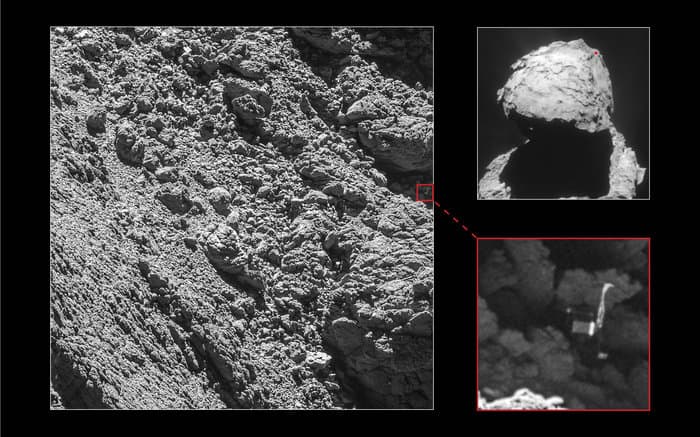
Elsewhere in the universe scientists working on the Rosetta space mission have managed to locate the final resting place of their Philae lander on the surface of comet 67P/Churyumov–Gerasimenko The discovery came nearly two years after the lander was lost as it bounced onto the comet’s surface. You have to look very carefully to see Philae in the above images taken by Rosetta’s high-resolution camera. The wayward lander is wedged into a dark crack on the comet and the instrument’s orientation clearly reveals why establishing communications was so difficult, following its landing on 12 November 2014. The images were taken on 2 September by the OSIRIS narrow-angle camera, as Rosetta came within 2.7 km of the surface.
Nobel for topological trio
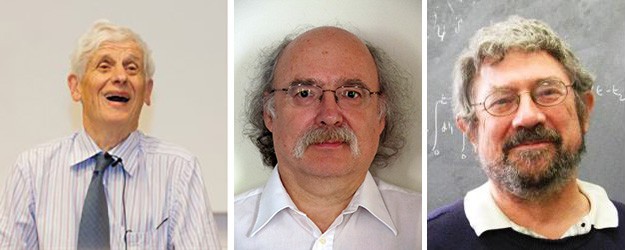
2016 was a great year for David Thouless, Duncan Haldane and Michael Kosterlitz who shared the Nobel Prize for Physics “for theoretical discoveries of topological phase transitions and topological phases of matter”. All three winners hail from the UK but have spent much of their professional careers in the US. The science behind this year’s prize tied together three concepts in physics and mathematics, namely: topology; quantum phase transitions; and states of matter. The result is what the Nobel committee described as “beautiful mathematical and profound physical insights”. Indeed, the laureates’ research has laid the theoretical basis for a variety of condensed-matter staples including superconductors and thin magnetic films.
Physics of fullness

Imagine if you could make foods that make you feel full after eating a small portion, sating your hunger and preventing you from overeating. Such a technology could play an important role in the fight against growing rates of obesity and improve the health of millions worldwide. The above image is of an emulsion of oil droplets in water – something that is found in many foods. In “Hungry for solutions” Cait McPhee, who is a biophysicist at the University of Edinburgh, explains how “functional ingredients” could be added to emulsions such as salad dressings to deliver satiety. These ingredients could be developed using soft-matter physics and could be used to create foods that trigger biological processes that lead to sensations of satiety. This article appeared in the November issue of Physics World, which focused on the physics of food.
Shifting ground in Italy

On 30 October this year a 6.5-magnitude earthquake struck central Italy – the largest earthquake in the country for over three decades. This image has been made using radar data from the European Space Agency’s Copernicus Sentinel-1 satellites and shows the devastating effect of the earthquake. Significant east–west ground displacements are visible in the area hit by the earthquake with an eastwards shift of about 40 cm near Montegallo and a westwards shift of about 30 cm centred in the area of Norcia. As well as these shifts, the satellite detected a vertical displacement, with the ground sinking by 60 cm around Castelluccio but rising by about 12 cm around Norcia. The Italian peninsula is prone to earthquakes due to the continuing collision of the African and Eurasian tectonic plates and central Italy has been hit by smaller earthquakes this year.
Penguin physicist

What do penguins, polymer physics and pattern recognition all have in common? In this “Penguin physics” feature the polymer physicist Peter Barham explains how a casual conversation with a zookeeper in Australia led to his involvement in the development of new technologies for identifying individual African penguins in biological studies. His first attempt was a new type of plastic flipper identification band to replace metal bands – which appeared to have a negative impact on swimming. Later, he enrolled the help of computer scientists to see if pattern recognition systems could be used to identify birds without the need of any bands.
Barham’s is a wonderful tale of a physicist who quite by chance became a penguin biologist. Find about more about his penguin research in this short video:



